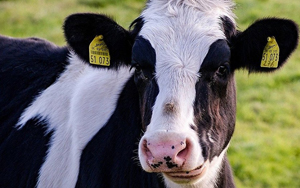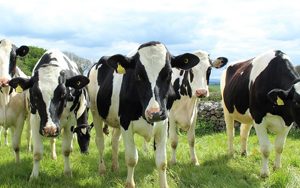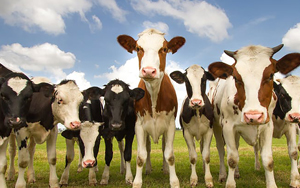Does Milk come from Pregnant Cows?
- Super User
- Blog
- Hits: 2941
So does milk come from pregnant cows? I am a dairy farmer and have the data from our farm so decided to take a crack at this urban legend. On farms these days, we record all the cow’s health records on a computer database. I’m not always out wielding my pitchfork, but more often than not troubleshooting technology…
I used our database to analyze the percentage of our herd’s status of pregnant/ not pregnant. I also broke down the data of the cows that were pregnant by trimesters.
What most people unfamiliar with dairy farming don’t understand is that the further into a pregnancy a cow goes the less milk she will produce. A cow will give the highest volume of milk when she is open.
The cows that could have the highest amount of hormones in their milk would be in their last trimester. The common practice on farms is to dry up the cow (since she is giving little milk by that time) and give her a vacation for the last two months of her pregnancy. So cows are only milked 7 months of their pregnancy- until day 217 of her pregnancy out of 280 days.
A cow’s blood estrogen levels during pregnancy doesn’t significantly increase until the 3rd trimester when she is dry
I broke the data down by trimester because a cow’s hormone level goes up slowly over the pregnancy. Her hormones are highest in the last trimester- but cows are usually dry at that time.
The data showed that about 89% of the milk came from cows that were not pregnant or in their first trimester. Only 9% of the milk came from cows in their 2nd trimester and only 2% of the milk came from cows in their 3rd trimester because they are only milked for 1 more month in that trimester before they are dried and sent on vacation. The cows in the later periods of their pregnancy gave less milk and are the smallest portion of the total milking herd.
About 90% of the milk comes from cows that are not pregnant or in an early pregnancy. The remaining amount does not contribute to a significant increase in hormones in milk. Milk has been tested to show the average amount of estrogen.
Here is the picture- If you have 14,000 gallons of milk (2 truckloads), here is how it’s divided by Cows in each category. (the % is the % of the milk in the 14,000 gallons)
The volume of milk produced by cows in the respective category on our farm. About 90% is from cows not pregnant or in early pregnancy.
Maybe this is a better visual- It is easy to see why milk wouldn’t have a lot of estrogen in it.
The other thing to consider is that just because a cows blood estrogen goes up during pregnancy, doesn’t mean that it necessarily correlates to the amount of estrogen in the milk.
The amount of estrogen in milk
People get more estrogen from vegetables like cabbage (at 2,000 ng) than they do from meat and dairy products.
Most people on this topic want other people to drink less milk- it’s a gross-out argument.
The hormones that you eat are broken down by your body. You don’t absorb them like a dangerous virus. And your body regulates hormone production, just like it regulates oxygen in your body. Your body isn’t brainless. (sorry a terrible joke).
It does become imbalanced when you eat too much estrogen- like taking steroids. But steroid users know that taking steroids orally is the most ineffective way to take them.
Why are people worried about milk’s 2ng/serving when there is 20,000-50,000ng in a birth control pill. Then you look at how much estrogen is in humans naturally – 130,000ng in Males/ 500,000ng is a Female. 2ng in a cup of milk will not influence your body in a significant way, especially when it has to go through digestion first.
The logic of the milk/ hormone myth
When you stop to think about it rationally and look at facts and the big picture, it’s really hard to believe that some people believe this myth. Yes, milk comes from female cows, but most things in nature have a sex. Fruits, for example, are plant OVERIES.







